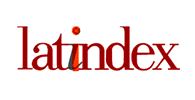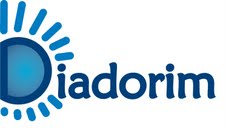Integrative Practices in Physiotherapy Education: Students Knowledge of Lian Gong in 18 Therapies
Physiotherapy Students' Knowledge of Lian Gong in 18 Therapies
DOI:
https://doi.org/10.13037/ras.vol22.e20249665Keywords:
Education, Lian Gong, PICSAbstract
Introduction: Over time, the holistic view of health and disease, which considers the human being as a unity of body and mind, has been shaped by various factors. The multicausal concept has opened new possibilities for health professionals. In 2006, the SUS approved the National Policy on Integrative and Complementary Practices. This includes acupuncture and Lian Gong in 18 Therapies, a body practice that promotes an active experience. Objectives: This study investigated the knowledge of physiotherapy students about Lian Gong in 18 Therapies as a viable technique for professional practice. Methods: A survey was conducted with data collection from focus groups, consisting of a moderator and an observer. The sessions were recorded in audio and video for subsequent transcription. Data collection used a semi-structured questionnaire with 10 questions, applied to 50 final-year physiotherapy students at the Municipal University of São Caetano do Sul. Results: The analysis showed that students' knowledge about Lian Gong is superficial. The practice is not widely known or used. However, the interest and curiosity of the participants indicate potential for greater dissemination and expansion of this integrative practice. Conclusion: The research revealed that physiotherapy students' knowledge about Lian Gong in 18 Therapies is limited. Nevertheless, the demonstrated interest suggests significant potential for the expansion and greater dissemination of this practice, indicating the need to include more information about Lian Gong in physiotherapy curricula
Downloads
References
Teixeira, E. O cuidar e a natureza em textos de história da saúde humana. Cogitare Enfermagem, p. 34–39, jul. 1998.
Scliar, M. História do Conceito de Saúde. Rev. Saúde Coletiva, p. 29–41, 2007.
World Health Organization. Constitution of the World Health Organization.
Puttini, RF. et al. Modelos explicativos em Saúde Coletiva: abordagem biopsicossocial e auto-organização. Physis Revista de Saúde Coletiva, p. 753–767, 2010.
Otani, MAP.; Barros, N F de. A Medicina Integrativa e a construção de um novo modelo na saúde. Ciência e Saúde Coletiva, v. 16, n. 3, p. 1801–1811, 2011.
Coulter, ID.; Willis, EM. The rise and rise of complementary and alternative medicine: a sociological perspective. The Medical Journal of Australia, v. 180, n. 11, p. 587–589, 7 jun. 2004.
Barros, NF de; Nunes, ED. Complementary and Alternative Medicine in Brazil: one concept, different meanings. Cad. Saúde Pública, v. 22, n. 10, p. 2023–2039, out. 2006.
Schveitzer, MC.; Esper, MV.; Silva, MJP da. Práticas integrativas e complementares na atenção primária em saúde: em busca da humanização do cuidado. O Mundo da Saúde, v. 36, n. 3, p. 442–451, 2012.
Dalcanale Tesser, C.; Luz, MT. Racionalidades médicas e integralidade. Ciência e Saúde Coletiva, p. 196–206, 2008.
Silva, GKF da. et al. National policy on integrative and complementary practices: Trajectory and challenges in 30 years of SUS. Physis, v. 30, n. 1, p. 1–25, 2020.
Tesser, CD.; Dallegrave, D. Complementary and alternative medicine and social medicalization: lack of definitions, risks, and potentials in primary healthcare. Cadernos de Saúde Pública, v. 36, n. 8, 1 set. 2020.
Pampana BL. et al. Medicalização como sintoma social dominante: estratégias a partir do paradigma psicossocial. Revista de Psicologia da Unesp, 2019.
Ming, ZY.; Shen, ZJ. Lian Gong Shi Ba Fa (Lian Gong em 18 Terapias) - Ginástica Terapêutica e Preventiva. 2a ed. São Paulo: Editora Pensamento, 2007.
Botelho, M.; Lee, ML. Lian Gong em 18 Terapias: forjando um corpo saudável - ginástica chinesa do Dr. Zhuang Yuan Ming. [s.l.] Associação Brasileira de Lian Gong em 18 Terapias, 2017.
Tedeschi, MRM.; et al. Aptidão funcional e qualidade de vida de idosos praticantes de Lian Gong, Tai Chi e Qigong. Acta Paul Enferm., v. 35, p. 1–8, 2022.
Andrade, SC. de et al. Experiência da inserção do Lian Gong na Estratégia Saúde da Família de Samambaia-Distrito Federal. Comunicação em Ciências da Saúde, 2012.
Lopes, AL. et al. Impact of lian gong on the quality of life of individuals with dizziness in primary care. Revista de Saúde Pública, v. 53, p. 1–12, 2019.
Bobbo, VCD. et al. Saúde, dor e atividades de vida diária entre idosos praticantes de Lian Gong e sedentários. Ciências & Saúde Coletiva, v. 23, p. 1151–1158, 2018.
Conselho Nacional de Saúde. Resolução no 559, de 15 de setembro de 2017.
Conselho Nacional de Saúde. Recomendação no 012, de 7 de abril de 2017.
Almeida, ST de; Valentim, AL.; Diefenbach, N. Lian Gong como prática fisioterápica preventiva do envelhecimento. Estudos Interdisciplinares Sobre Envelhecimento, v. 6, p. 1031–110, 2004.
Seni, TT.; Pereira, O. Pichon-Rivière, a dialética e os grupos operativos: implicações para pesquisa e intervenção. Revista da SPAGESP.
Livramento, G.: Franco, T.; Livramento, A. A ginástica terapêutica e preventiva chinesa Lian Gong/Qi Gong como um dos instrumentos na prevenção e reabilitação da LER/DORT. Revista Brasileira de Saúde Ocupacional, v. 35 (121): 74-86, 2010.
Tedeschi, MRM.; Assone, T.; Ferreira, M.; Souza, KMJ de. Functional fitness and quality of life of elderly Lian Gong, Tai Chi and Qigong practitioners. Acta Paulista de Enfermagem, v. 35, eAPE03577, Oct. 2022.
Lima, PVA. The holism in Jam Smuts and the gestalt therapy. Revista da Abordagem Gestáltica – XIV (1): 3-8, jan-jun, 2008.
Schorne, G.; Bittencourt, DC.; Holler, A. Aplicabilidade das técnicas holísticas na prática fisioterapêutica. Saúde Integrada, v. 7, n. 14, p. 89-105, 2014.
Toneti, BF.; Barbosa. RFM.; Mano, LY.; Sawada, LO.; oliveira, IG.; Sawada, NO. Benefits of Qigong as an integrative and complementary practice for health: a systematic review. Revista Latino-Americana de Enfermagem. 2020;28:e3317.
Downloads
Published
Issue
Section
License
Copyright (c) 2024 Reinaldo Gonçalves, Luisa Veras de Sandes-Guimarães, Leandro Bueno Lima

This work is licensed under a Creative Commons Attribution-NonCommercial-NoDerivatives 4.0 International License.
Policy Proposal for Journals offering Free Delayed Access
Authors who publish in this magazine agree to the following terms:
- Authors maintain the copyright and grant the journal the right to the first publication, with the work simultaneously licensed under a Creative Commons Attribution License after publication, allowing the sharing of the work with recognition of the authorship of the work and initial publication in this journal.
- Authors are authorized to assume additional contracts separately, for non-exclusive distribution of the version of the work published in this magazine (eg, publishing in institutional repository or as a book chapter), with the acknowledgment of the authorship and initial publication in this journal.
- Authors are allowed and encouraged to publish and distribute their work online (eg in institutional repositories or on their personal page) at any point before or during the editorial process, as this can generate productive changes, as well as increase impact and citation of the published work (See The Effect of Open Access).









